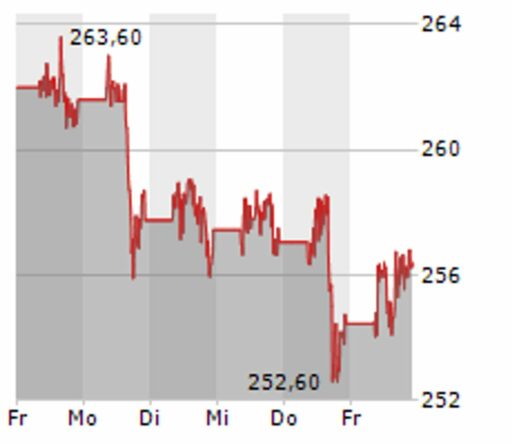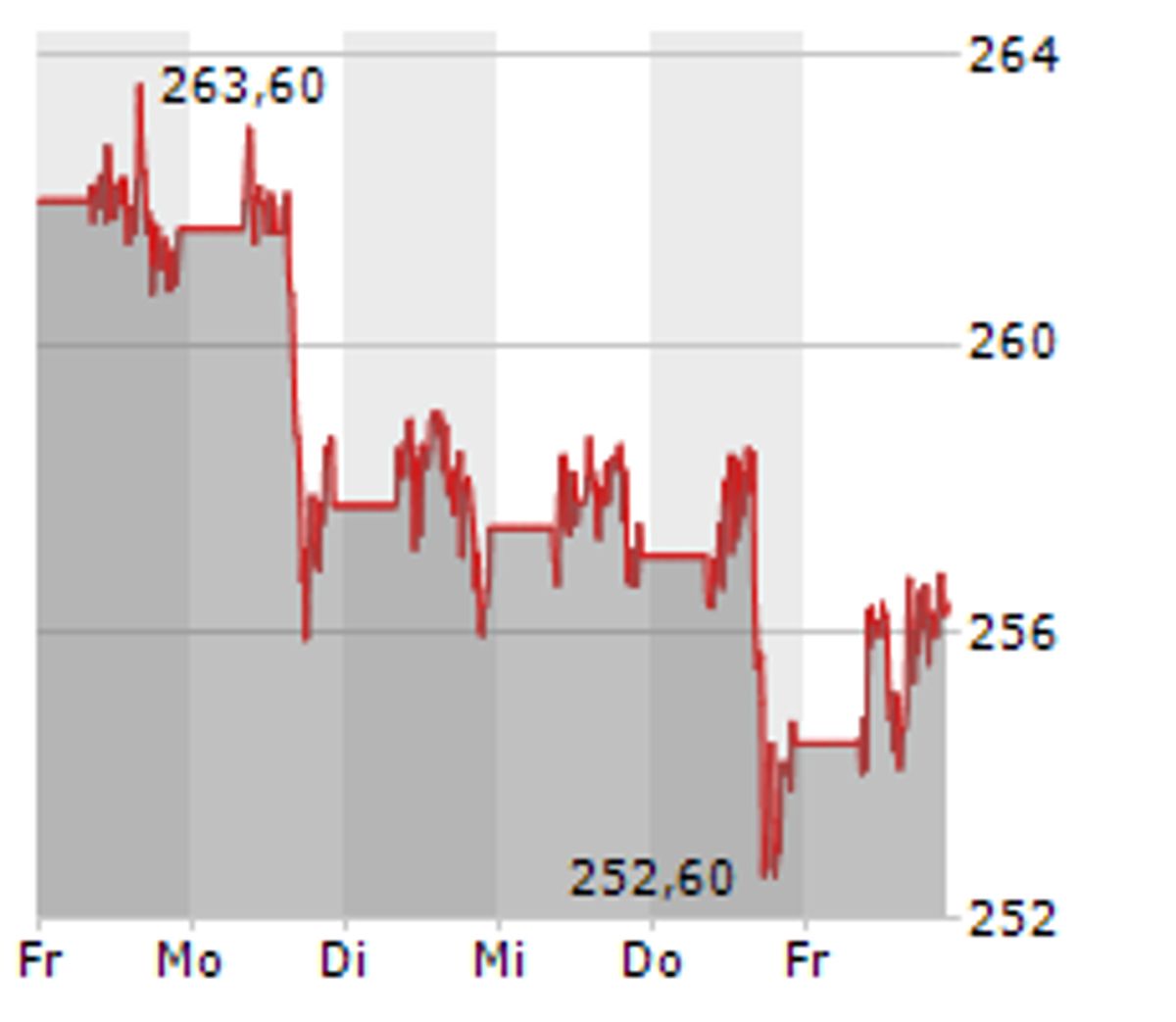Visa’s stock performance has been a testament to the company’s robust financial health and strategic market positioning. Over the past decade, Visa has demonstrated significant revenue growth, net income expansion, and steadfast dividend increases, all contributing to a substantial appreciation in stock price. This financial analysis delves into Visa’s historical performance, comprehensive financial metrics, valuation, competitive edge, and future outlook to provide investors with a well-rounded perspective on the company’s investment potential.
Key Takeaways
- Visa’s revenues and net income have shown remarkable growth over the last decade, with revenues increasing by 200% and net income quadrupling.
- The company has consistently rewarded shareholders through dividend growth, which has increased tenfold, and share buybacks, reducing outstanding shares by nearly 30% since 2009.
- Visa’s stock has experienced significant appreciation, reflecting the company’s strong financials and positive market trends.
- Despite a high valuation and low dividend yield, Visa maintains a low dividend payout ratio, enabling reinvestment of capital at high rates of return.
- Visa’s future growth is anticipated to continue at an aggressive pace, with expectations of a 15% annual increase in earnings, which should drive further stock performance.
Historical Performance and Growth Trajectory


Revenue and Net Income Expansion Over the Decade
Over the past decade, Visa has demonstrated a robust financial performance, marked by consistent revenue growth and a strong expansion of net income. The company’s net profit margin has remained impressively high, reflecting its ability to efficiently convert revenue into profit.
| Year | Net Income (US$ in millions) | Net Revenues (US$ in millions) | Net Profit Margin |
|---|---|---|---|
| 2022 | 14,957 | 29,310 | 51.03% |
| 2021 | 12,311 | 24,105 | 51.07% |
| 2020 | 10,866 | 21,846 | 49.74% |
| 2019 | 12,080 | 22,977 | 52.57% |
| 2018 | 10,301 | 20,609 | 49.98% |
| 2017 | 6,699 | 18,358 | 36.49% |
The table above succinctly captures the upward trajectory of Visa’s financial health, with net income rising significantly from $6.7 billion in 2017 to nearly $15 billion in 2022. This growth has been accompanied by a steady increase in net revenues, underscoring the company’s expanding business operations.
Visa’s ability to maintain a net profit margin above 49% throughout the decade is a testament to its operational excellence and strategic positioning in the payments industry.
The company’s financial growth is not just reflected in its income statements but also in various growth metrics such as annual growth in net income, earnings per share (EPS), and free cash flow, all of which have shown positive trends over the years.
Dividend Growth and Share Buybacks
Visa has consistently rewarded its shareholders through a combination of dividend growth and share buybacks. The company’s commitment to returning value to shareholders is evident in its dividend yield of 0.74%, which translates to $0.74 in dividends annually for every $100 invested.
Visa’s approach to capital allocation has been strategic, focusing on maintaining a balance between reinvesting in the business and providing returns to shareholders.
The table below highlights key figures related to Visa’s dividend payments and share repurchase programs over recent years:
| Year | Dividend per Share | Total Dividends Paid | Share Buybacks (in millions) |
|---|---|---|---|
| 2021 | $1.28 | $2.9 billion | $8 billion |
| 2020 | $1.20 | $2.7 billion | $7.5 billion |
| 2019 | $1.00 | $2.5 billion | $9 billion |
This structured approach to capital return has not only provided a steady income stream for investors but also helped to reduce the number of outstanding shares, potentially increasing the value of remaining shares.
Stock Price Appreciation and Market Trends
Visa’s stock price has demonstrated a robust growth pattern, reflecting the company’s expanding market presence and consistent financial performance. The historical daily share price chart indicates a positive trajectory since 2008, adjusted for splits and dividends, with the latest closing stock price for Visa as of March 07, 2024, showcasing the company’s resilience in the face of market fluctuations.
Visa’s stock performance is not just a reflection of past achievements but also a barometer for future expectations. The company’s ability to navigate through market trends and economic cycles has been a testament to its strategic planning and execution.
The following table summarizes Visa’s stock performance over key time intervals:
| Period | % Change |
|---|---|
| 1 Year | +15% |
| 3 Years | +45% |
| 5 Years | +70% |
Analyst consensus suggests a strong buy rating, with an average price target indicating a potential upside. Market sentiment remains bullish, with technical indicators like the SMA (Simple Moving Average) showing positive momentum over the past year.
Comprehensive Financial Analysis


Profitability and Return on Invested Capital
Visa’s financial health can be significantly measured by its profitability and return on invested capital (ROIC). These metrics are crucial for investors to understand how effectively the company is using its capital to generate profits. A closer look at Visa’s profitability ratios over the past few years reveals a consistent pattern of strong performance.
The following table summarizes key profitability ratios for Visa Inc.:
| Year | Net Profit Margin | Operating Profit Margin | Return on Equity (ROE) | Return on Assets (ROA) |
|---|---|---|---|---|
| 2022 | 51.03% | 64.19% | 42.04% | 17.49% |
| 2021 | 51.07% | 65.56% | 32.75% | 14.85% |
| 2020 | 49.74% | 64.46% | 30.01% | 13.43% |
Visa’s ability to maintain high net profit and operating profit margins, alongside robust returns on equity and assets, underscores its operational efficiency and strategic capital allocation.
When evaluating Visa’s ROIC, it is evident that the company has been successful in turning its invested money into profits. This is a testament to Visa’s strong business model and effective management.
Balance Sheet Strength and Cash Flow Stability
Visa’s balance sheet reflects a robust financial position, with a significant increase in total assets over recent years. As of the latest reporting period, Visa’s total assets stood at $91.41 billion, showcasing the company’s growth and stability. The liquidity position is further strengthened by a substantial cash and cash equivalents balance of $15.7 billion, ensuring Visa can meet its short-term obligations and invest in growth opportunities.
Visa’s cash flow statement reveals a healthy pattern of cash generation. The company’s operating cash flow has been consistently positive, indicating efficient operations and profitability. Free cash flow, a critical indicator of financial health, was reported at $3.35 billion, providing Visa with the flexibility to pursue strategic initiatives and return value to shareholders through dividends and share repurchases.
| Year | Total Assets | Total Debt | Net Debt | Free Cash Flow |
|---|---|---|---|---|
| 2022 | $91.41B | $20.70B | $2.11B | $3.35B |
| 2021 | $90.50B | $20.46B | $4.97B | $6.62B |
| 2020 | $89.21B | $20.56B | $6.76B | $5.50B |
| 2019 | $86.72B | $20.61B | $4.37B | $3.65B |
| 2018 | $85.39B | $20.49B | $3.92B | $3.92B |
Visa’s financial discipline and strategic management of its balance sheet and cash flows position it well for sustainable growth and resilience against economic fluctuations.
Earnings Outlook and Future Projections
Visa’s earnings outlook remains robust, with analysts forecasting a consensus EPS of $2.42 for the upcoming quarter. This projection aligns with the company’s historical trend of consistent earnings growth, as reflected in the non-GAAP and GAAP financial highlights.
Visa’s ability to maintain a steady increase in net income and earnings per share is indicative of its strong financial management and strategic positioning in the payments industry.
The following table summarizes Visa’s financial performance over the past three fiscal years, showcasing the growth in net revenues, operating expenses, and net income:
| Fiscal Year | Net Revenues (in millions) | Operating Expenses (in millions) | Net Income (in millions) | EPS (Non-GAAP) |
|---|---|---|---|---|
| 2021 | $24,105 | $8,077 | $12,933 | $5.91 |
| 2022 | $29,310 | $9,387 | $16,034 | $7.50 |
| 2023 | $32,653 | $10,481 | $18,280 | $8.77 |
The positive trajectory in Visa’s financials is further supported by a strong buy consensus from analysts and an anticipated price target upside of 9.57%. These factors contribute to a favorable earnings outlook and suggest potential for future stock appreciation.
Investment Valuation Metrics


Intrinsic Stock Value Assessment
Assessing the intrinsic stock value of Visa involves a deep dive into various valuation techniques. One of the primary methods is the Dividend Discount Model (DDM), which calculates the present value of projected future dividends. Another approach is the Free Cash Flow to Equity (FCFE) valuation, focusing on the present value of future cash flows after accounting for reinvestment needs and debt payments.
When comparing Visa to its peers, relative valuation ratios such as Price to Earnings (P/E), Price to Book Value (P/BV), and Price to Sales (P/S) provide insight into how the market values Visa relative to other companies in the industry. These ratios are crucial for investors to understand whether Visa’s stock is undervalued or overvalued compared to its competitors.
The valuation of Visa’s stock is not only a reflection of its current financial performance but also of its long-term growth expectations and market position.
Here’s a snapshot of Visa’s valuation ratios compared to the industry averages:
| Valuation Ratio | Visa Inc. | Industry Average |
|---|---|---|
| P/E Ratio | Above | Average |
| P/BV Ratio | – | Average |
| P/S Ratio | Above | Average |
These figures highlight Visa’s market assessment and can guide investors in making informed decisions.
Dividend Yield and Payout Ratio Considerations
Visa’s approach to dividends reflects its financial health and commitment to shareholder returns. The dividend yield, a measure of the dividend in relation to the stock price, offers insights into the stock’s income-generating potential. On the other hand, the dividend payout ratio indicates the proportion of earnings distributed as dividends, which for Visa is reported to be sustainable at 21.54%.
| Year | Dividend Yield (%) | Dividend Payout Ratio (%) |
|---|---|---|
| 2021 | 0.60 | 22.00 |
| 2022 | 0.65 | 21.54 |
Investors often seek a balance between a reasonable yield and a payout ratio that leaves room for reinvestment and growth. Visa’s consistent payout ratio suggests a disciplined approach to capital allocation.
Visa’s dividend policy not only rewards investors but also signals confidence in its future earnings capacity.
Analyst Forecasts and Technical Analysis
Visa’s stock performance is closely monitored by industry analysts, with a consensus rating pointing towards a Strong Buy. The average 1-year price target among analysts is $307.32, suggesting a 9.57% upside from the current levels. This optimistic outlook is supported by Visa’s robust financials and its dominant position in the payment processing industry.
Technical analysis indicators provide a more mixed view, with a neutral consensus over various time frames. The 10-day and 30-day average trading volumes stand at 5,036,234 and 5,559,401 respectively, reflecting a steady investor interest in the stock.
Visa’s ability to maintain a competitive edge in the market is reflected in the positive sentiment from both analysts and technical indicators, despite the inherent volatility of the stock market.
The following table summarizes key technical analysis metrics:
| Metric | Value |
|---|---|
| Standard Deviation | 0.07 |
| R-Squared | 0.55 |
| Alpha | 0.00260 |
Visa’s Market Position and Competitive Edge


Market Share and Global Economic Impact
Visa’s commanding presence in the global payments industry is reflected in its substantial market share and the significant economic impact it has on worldwide commerce. Visa’s net profit margin consistently outperforms its competitors, indicating a robust competitive advantage and efficient operations.
| Year | Net Profit Margin | Operating Profit Margin | ROE |
|---|---|---|---|
| 2022 | 51.03% | 64.19% | 42.04% |
| 2021 | 51.07% | 65.56% | 32.75% |
| 2020 | 49.74% | 64.46% | 30.01% |
| 2019 | 52.57% | 65.29% | 34.83% |
| 2018 | 49.98% | 62.86% | 30.29% |
The financial performance of Visa is strongly affected by macroeconomic factors. At the start of the COVID-19 pandemic, the company’s resilience was tested as the stock experienced a significant drop. However, Visa’s quick recovery and continued growth trajectory underscore its economic influence and the essential nature of its services.
Visa’s ability to maintain high profitability ratios despite various economic challenges showcases its strong market position and the underlying demand for its payment processing services.
Product Portfolio and Consumer Behavior
Visa’s diverse product portfolio has been instrumental in catering to a wide range of consumer needs, from traditional credit and debit cards to innovative digital payment solutions. The Visa Analytics Platform stands out by offering businesses performance insights that are both accessible and actionable. With new dashboards, clients can assess their business performance at a glance, identifying potential growth opportunities and benchmarking against peers.
Consumer behavior has shifted significantly in the post-pandemic landscape. Solid consumer spending and a surge in cross-border payments, particularly due to the travel rebound, have bolstered Visa’s transaction volumes. However, recent trends indicate a potential slowdown in spending. Retail giants like Macy’s and Target have reported a decline in traffic and comparable sales, signaling a cautious approach to spending by consumers. The impending resumption of student loan payments and sustained higher interest rates are expected to further pressure personal budgets.
Visa’s ability to adapt to changing market conditions and consumer spending habits will be crucial for maintaining its growth trajectory and market leadership.
Understanding these dynamics is essential for investors considering Visa’s stock. The company’s performance is closely tied to consumer expenditure, which is influenced by broader economic factors such as GDP growth, money supply, and industrial production.
Strategic Partnerships and Brand Strength
Visa’s strategic partnerships have been pivotal in cementing its market dominance and enhancing its brand strength. By collaborating with major financial institutions, fintech startups, and retailers, Visa has expanded its global reach and fortified its position in the payments industry.
The company’s brand is recognized worldwide for its reliability and security, which are critical factors in the financial services sector. Visa’s ability to maintain high standards in these areas has contributed to its strong financial performance and customer loyalty.
Visa’s strategic initiatives and partnerships reflect a commitment to innovation and customer satisfaction, which are essential for long-term success.
The following table highlights Visa’s financial performance in comparison to its competitors, showcasing its superior profitability margins:
| Year | Visa’s Net Profit Margin | Competitors’ Average Net Profit Margin |
|---|---|---|
| 2022 | 51.03% | 13.63% (Average of selected competitors) |
| 2021 | 51.07% | 14.31% |
| 2020 | 49.74% | 27.79% |
| 2019 | 52.57% | 22.41% |
| 2018 | 49.98% | 19.30% |
Visa’s consistent focus on strategic partnerships and maintaining a strong brand has not only driven revenue growth but also enhanced shareholder value.
Future Outlook and Investment Considerations


Growth Expectations and Industry Trends
Visa’s future growth is closely tied to the broader trends within the financial industry and the global economy. The company’s ability to adapt to evolving consumer behavior and technological advancements will be crucial.
- PE by Industry
- Total Debt to Equity by Industry
- Revenue per Employee by Industry
- Return On Assets by Industry
- Performance by Industry
- Growth Rates by Industry
- Profitability by Industry
- Valuation by Industry
- Financial Strength by Industry
Visa’s growth trajectory is expected to mirror the dynamism of the financial sector, with particular emphasis on digital payments and fintech innovations.
The importance of growth rates in the valuation of stocks like Visa cannot be overstated. A consistent growth rate can lead to sustained stock performance, while any deceleration could significantly impact investor sentiment and stock valuation.
Risks and Challenges Ahead
While Visa’s market position remains robust, the company faces several risks and challenges that could impact its future performance. Regulatory scrutiny and legal challenges are among the most significant concerns, as changes in legislation and compliance requirements can lead to increased costs and operational hurdles.
- Economic downturns can reduce consumer spending and transaction volumes, directly affecting Visa’s revenue streams.
- Technological disruptions and the rise of alternative payment methods could erode Visa’s market share.
- Cybersecurity threats pose a constant risk to the integrity of Visa’s transaction processing network.
Visa’s ability to navigate these risks and adapt to an evolving financial landscape will be critical for sustaining growth and maintaining investor confidence.
Investor Sentiment and Stock Performance Projections
Investor sentiment towards Visa stock has been overwhelmingly bullish, reflecting confidence in the company’s future performance. Analyst consensus points to a strong buy rating, with an average price target suggesting a 9.57% upside potential. The Smart Score, a composite score that factors in various market sentiments and trends, rates Visa as ‘Outperform’ with a score of 9 out of 10.
The positive outlook is further supported by crowd wisdom, indicating an uptick in sentiment over recent periods. Technical indicators also show a favorable momentum, with a positive short-term moving average (SMA) trend.
However, insider transactions reveal a different narrative, with significant shares sold in the past three months. This divergence between external sentiment and internal actions could signal caution for potential investors. Hedge fund trends also show a decrease in holdings, which may impact the stock’s performance.
| Metric | Value |
|---|---|
| Analyst Price Target | $307.32 |
| Upside Potential | 9.57% |
| Smart Score | 9/10 |
| Blogger Sentiment | 98% Bullish |
| Hedge Fund Trend | Decreased by 6.9M Shares |
Understanding the nuances of investor sentiment and market trends is crucial for projecting Visa’s stock performance. While the current sentiment is positive, investors should remain vigilant of the underlying factors that could influence future stock movements.
Conclusion
In summary, Visa’s stock performance has been a testament to the company’s robust financial health and strategic growth initiatives. Over the past decade, Visa has demonstrated impressive revenue growth, a quadrupling of net income, and a tenfold increase in dividends, underscoring its ability to deliver value to shareholders. Despite a high valuation and a relatively low dividend yield, Visa’s consistent reinvestment in high-return opportunities and a shrinking number of outstanding shares have contributed to its strong market position. Looking ahead, the company’s prospects remain bright, with expectations of continued earnings growth. Investors should, however, remain cognizant of the risks associated with high valuations and the need for sustained growth. Visa’s ability to adapt to changing consumer behaviors and economic pressures will be critical in maintaining its trajectory of success.
Frequently Asked Questions
How has Visa’s revenue grown over the past decade?
Over the last decade, Visa’s revenues have grown by an impressive 200%, reflecting the company’s strong financial performance and market expansion.
What has been the trend in Visa’s dividend and share buybacks?
Visa has significantly rewarded shareholders with a tenfold increase in dividends and a reduction in outstanding shares from 3 billion to 2.2 billion over the past 10 years, which is nearly a 30% decrease.
What is the current dividend payout ratio for Visa and how does it affect the stock?
Visa maintains a low dividend payout ratio of around 20%, allowing the company to reinvest capital at rates above 20%, which is beneficial for long-term stock growth.
What are analysts saying about Visa’s stock performance and future growth?
Analysts are generally optimistic about Visa’s stock performance, expecting the company to continue its trend of 15% earnings growth per year, which should correspondingly lead to strong stock returns.
How does Visa’s balance sheet and cash flow stability look?
Visa’s balance sheet is robust, with consistent earnings and cash flow growth contributing to its financial stability and attractiveness as an investment.
What are some potential risks and challenges for Visa in the future?
Potential risks for Visa include shifts in consumer behavior, changes in interest rates, economic pressures, and the need to maintain its growth trajectory to justify its high valuation.





